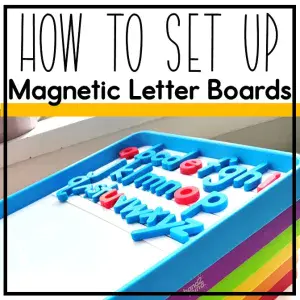Setting expectations doesn’t have to be a daunting task. In fact, with a little planning, it can be a fun and rewarding part of starting the school year. As we gear up for another exciting year with our energetic elementary schoolers, it’s crucial to lay the groundwork for a positive and productive classroom. In this blog post, I’m going to share three easy-peasy steps to set those all-important classroom expectations. Whether you’re a veteran teacher or just starting out, these tips will help you create a smooth-running and happy classroom. Let’s dive in and get your classroom ready for success!
What are Classroom Expectations?
Classroom expectations are basically the rules and guidelines teachers set to keep things running smoothly and make sure everyone can learn. These cover how students should behave, participate in class, respect each other, and take responsibility for their work.

Download these FREE Classroom Expectations.
Why are Classroom Expectations Important?
Setting classroom expectations is so important because they create a clear and positive environment, making it easier for everyone to focus and get along. When teachers set these standards, it helps cut down on distractions and keeps things respectful and organized. This way, every student gets a fair shot at learning and growing both academically and personally.
How to Teach Classroom Expectations
Step 1: Be Clear
When establishing classroom expectations, clarity and conciseness are key. Students, especially young ones, thrive on straightforward instructions that leave no room for ambiguity. Clearly articulated guidelines help students understand exactly what is required of them, reducing confusion and potential misbehavior. Instead of overwhelming them with a long list of rules, focus on a few core standards and explain them in simple, direct language. Reinforce these expectations consistently, using visuals and examples to illustrate them. By being clear and concise, you set a strong foundation for a well-managed classroom where students feel confident and know exactly what is expected of them.
Incorporating Books to Introduce Expectations
Using books to teach classroom expectations to elementary students is such a fun and effective method. Kids love stories, and through relatable characters and situations, they can easily grasp important concepts like respect, responsibility, and cooperation. By picking the right books, teachers can make these lessons memorable and engaging. Plus, it opens up great discussions and helps build a positive classroom vibe where everyone knows what’s expected. It’s a win-win!

Check out my 15 favorite books for Back to School!
Step 2: Make it Meaningful
It can really help students to understand the “why” behind why we do certain things. When rules are arbitrary, students question the importance of following them. But, when we consistently reiterate the need to keep our classroom a safe environment where all students can learn. When students grasp the importance of what is appropriate, they are more likely to internalize and follow them.
Using Behavior Stories to Set Expectations
In order to convey the “why” behind an expectation, discuss how NOT following the expectation impacts others. Engaging students in discussions about why certain behaviors are expected fosters a sense of ownership and accountability. By connecting expectations to real-world consequences and benefits, you create a classroom environment where students feel respected, understood, and motivated to contribute positively.
Using Behavior Stories is an excellent way to start these important conversations about expected versus unexpected behaviors. This resource is a fun, collaborative approach to build classroom community and teach expected and unexpected behaviors all over the school. It will help facilitate conversations and provide a reflection on how choices impact our school.

Step 3: Reinforce Expectations
Keeping classroom expectations on track after that initial teaching is super important for a smooth-running class. Consistency is your best friend here—make sure to revisit and reinforce those expectations often so they stay top of mind for your students. Give out lots of positive reinforcement when you see behaviors that meet your expectations. This encourages those students and sets a great example for others. When someone slips up, handle it calmly and quickly, reminding them of the expected behavior and why they matter. Sprinkle reminders into your daily routines and weave expectations into classroom chats and activities. By keeping these standards alive and well, you’ll create a predictable, supportive environment where students feel secure and are eager to follow the guidelines you’ve set.
Promote Positive Choices with Behavior Trackers
Promoting positive choices in the classroom can be a game-changer, and behavior trackers are a fantastic tool to make this happen. These trackers help students visually see their progress, encouraging them to make good decisions throughout the day. Whether it’s a sticker chart, a digital app, or a simple checkmark system, behavior trackers give kids a sense of accomplishment and motivate them to stay on track. They also provide teachers with a straightforward way to reinforce positive behaviors and address any issues early on. By using behavior trackers, we can create a more structured and encouraging learning environment where positive choices are celebrated and rewarded. Check out this donut behavior tracker!

As we wrap up, remember that setting expectations is not just about rules and regulations but about creating a supportive and vibrant learning environment. By incorporating engaging activities, clear communication, and consistent reinforcement, you can help your students understand and embrace classroom expectations. This foundation of mutual respect and understanding will pave the way for a year filled with growth, learning, and joyful moments. Embrace these easy-peasy steps and watch as your classroom transforms into a well-oiled machine where students thrive and succeed. Here’s to a fantastic school year ahead!



